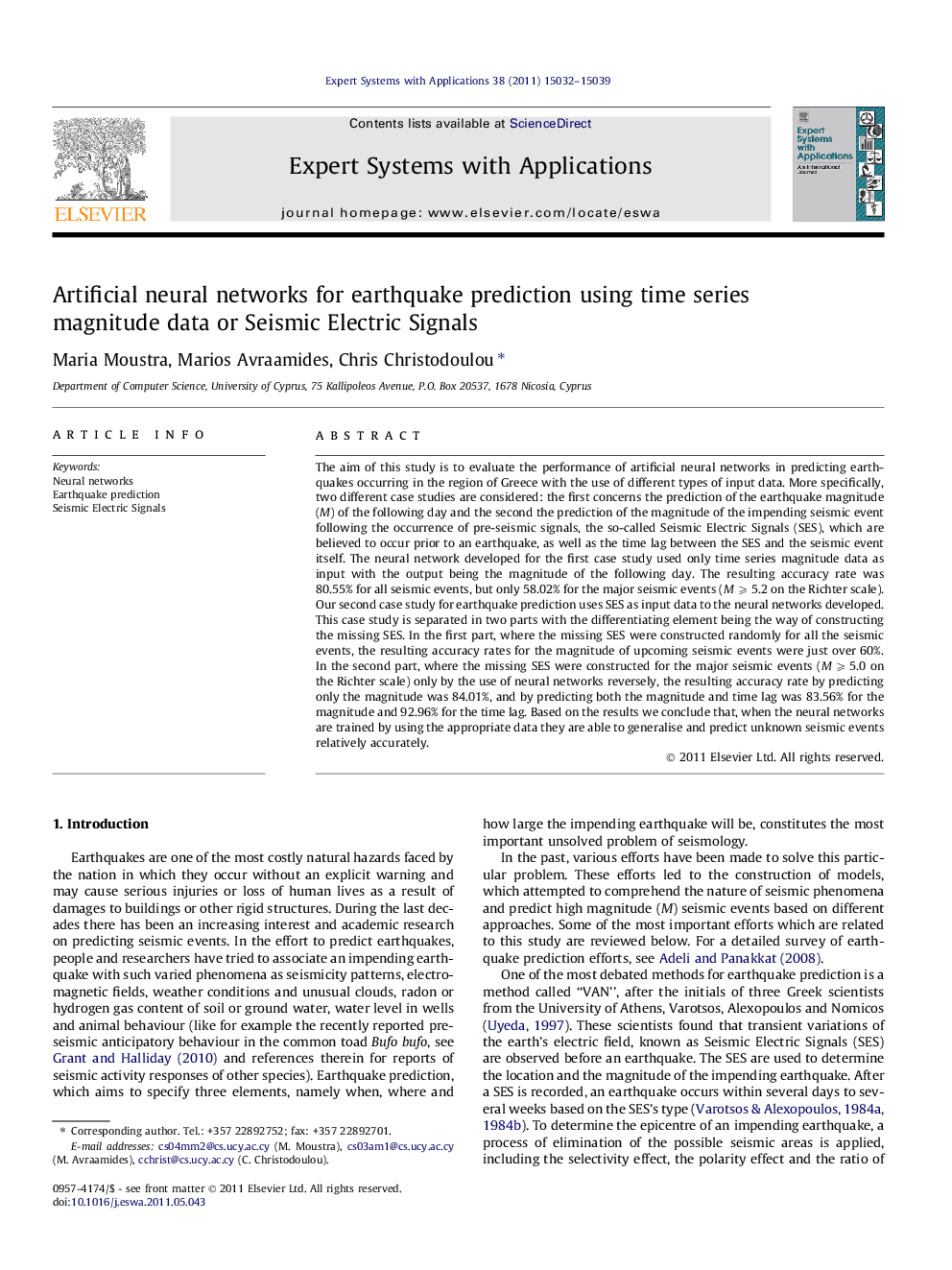| Article ID | Journal | Published Year | Pages | File Type |
|---|---|---|---|---|
| 385128 | Expert Systems with Applications | 2011 | 8 Pages |
The aim of this study is to evaluate the performance of artificial neural networks in predicting earthquakes occurring in the region of Greece with the use of different types of input data. More specifically, two different case studies are considered: the first concerns the prediction of the earthquake magnitude (M) of the following day and the second the prediction of the magnitude of the impending seismic event following the occurrence of pre-seismic signals, the so-called Seismic Electric Signals (SES), which are believed to occur prior to an earthquake, as well as the time lag between the SES and the seismic event itself. The neural network developed for the first case study used only time series magnitude data as input with the output being the magnitude of the following day. The resulting accuracy rate was 80.55% for all seismic events, but only 58.02% for the major seismic events (M ⩾ 5.2 on the Richter scale). Our second case study for earthquake prediction uses SES as input data to the neural networks developed. This case study is separated in two parts with the differentiating element being the way of constructing the missing SES. In the first part, where the missing SES were constructed randomly for all the seismic events, the resulting accuracy rates for the magnitude of upcoming seismic events were just over 60%. In the second part, where the missing SES were constructed for the major seismic events (M ⩾ 5.0 on the Richter scale) only by the use of neural networks reversely, the resulting accuracy rate by predicting only the magnitude was 84.01%, and by predicting both the magnitude and time lag was 83.56% for the magnitude and 92.96% for the time lag. Based on the results we conclude that, when the neural networks are trained by using the appropriate data they are able to generalise and predict unknown seismic events relatively accurately.
► Neural networks’ performance evaluation in predicting earthquakes using time series magnitude data or Seismic Electric Signals. ► The scarcity of Seismic Electric Signals (SES) was an obstacle in our survey. ► Construction of the missing SES, in order to be used as input to our neural network (NN) models. ► 84% accuracy for magnitude prediction of major seismic events using SES for such events only, constructed with NNs reversely. ► Neural networks are able to predict major seismic events relatively accurately when trained with the appropriate data.
